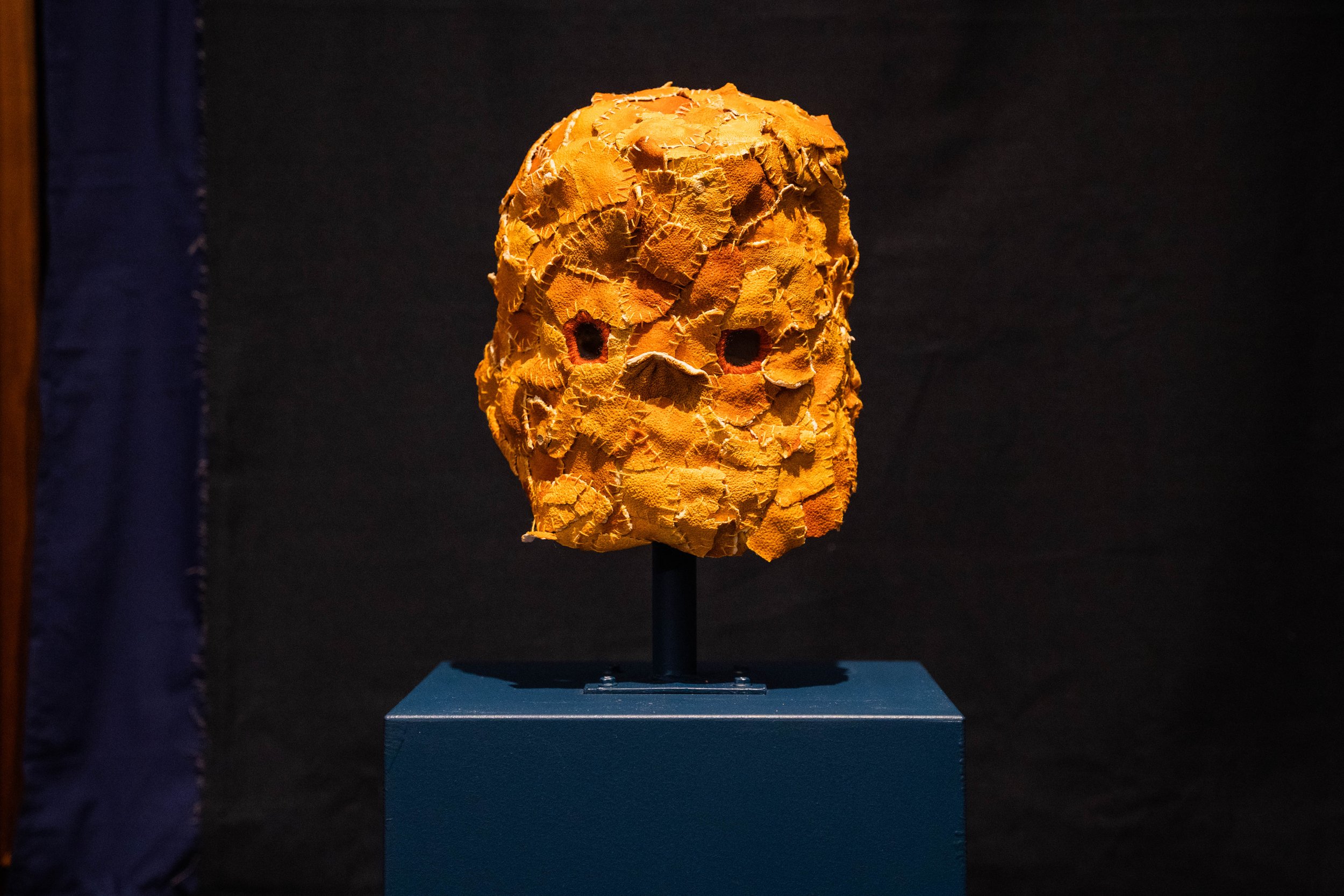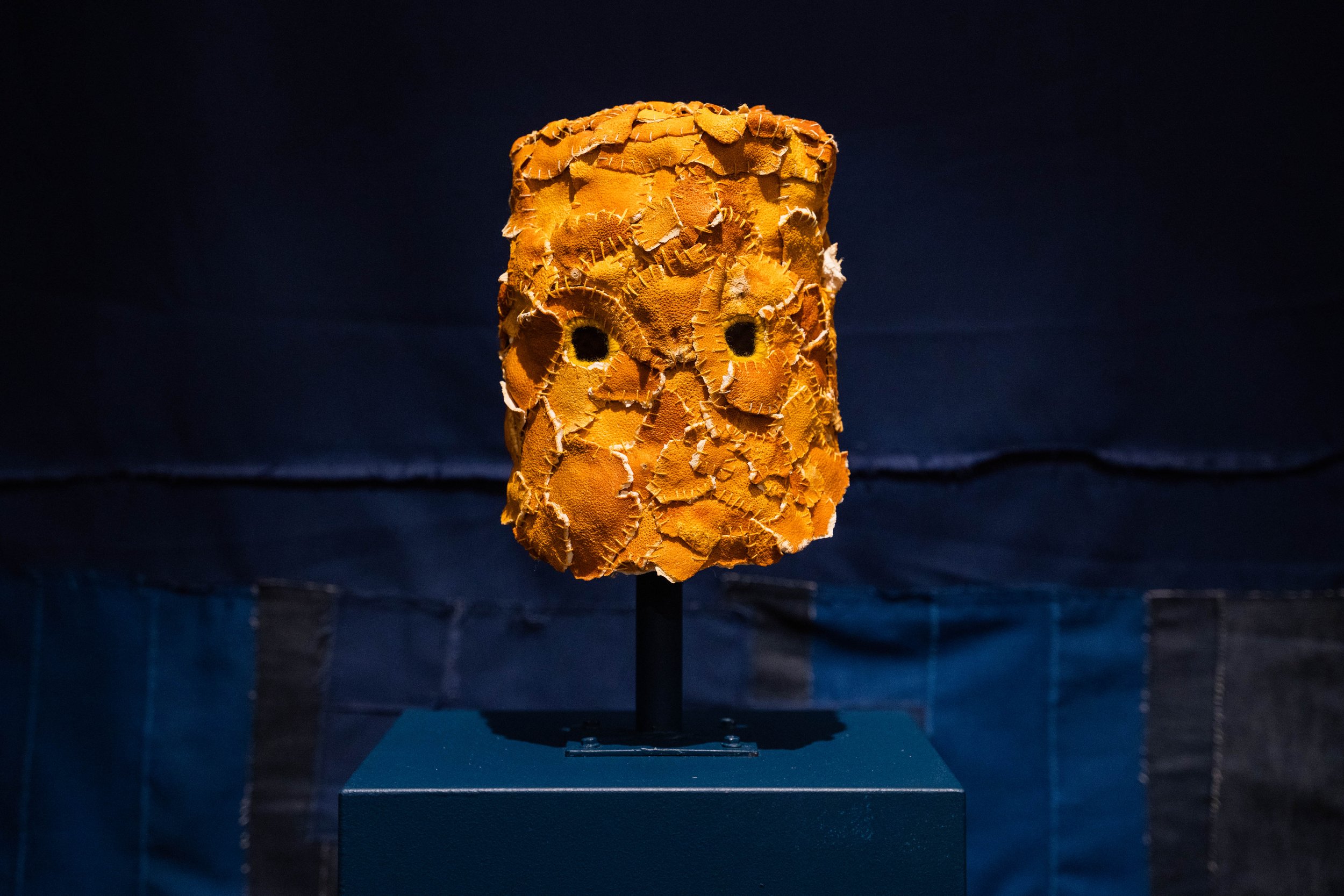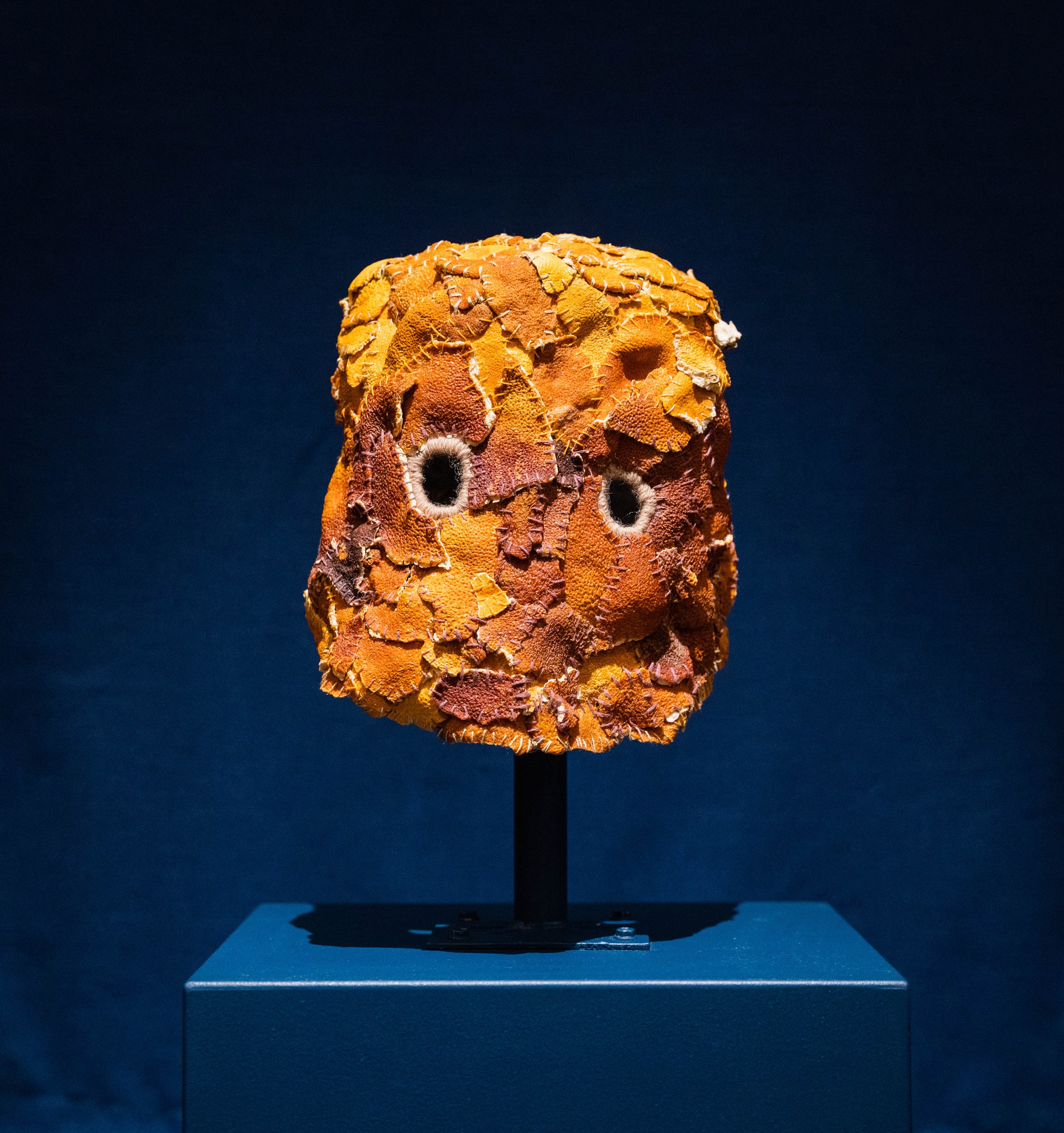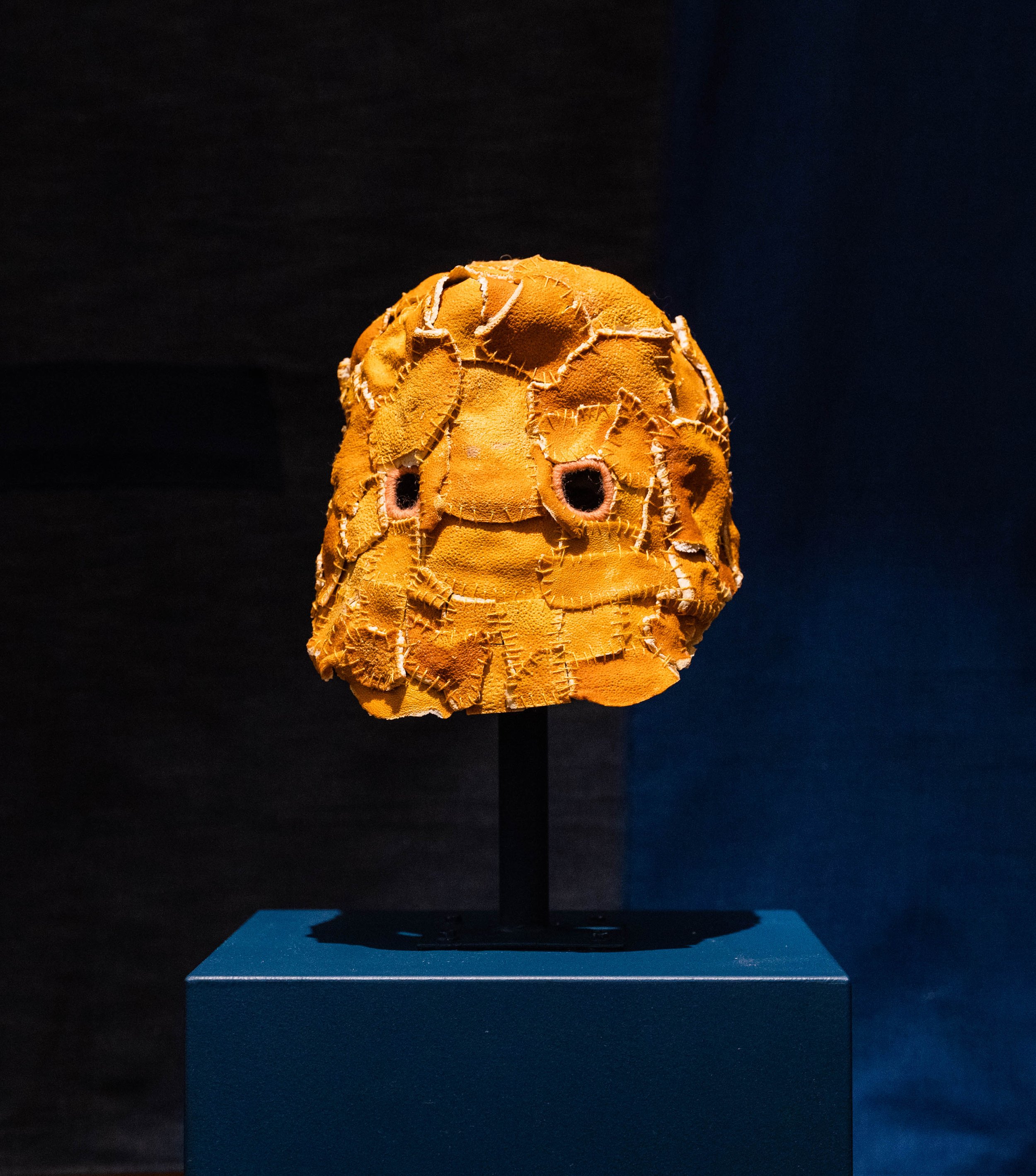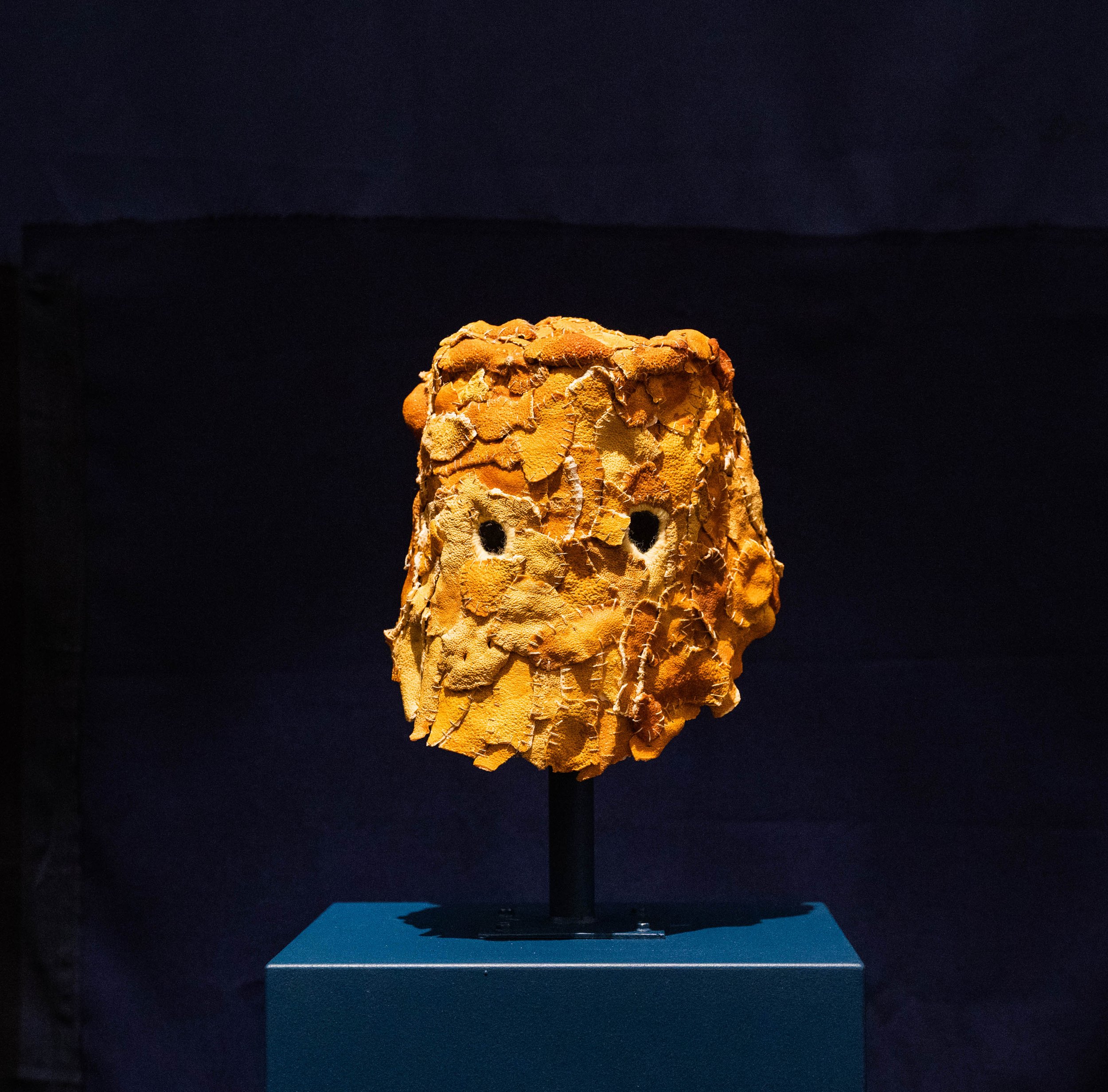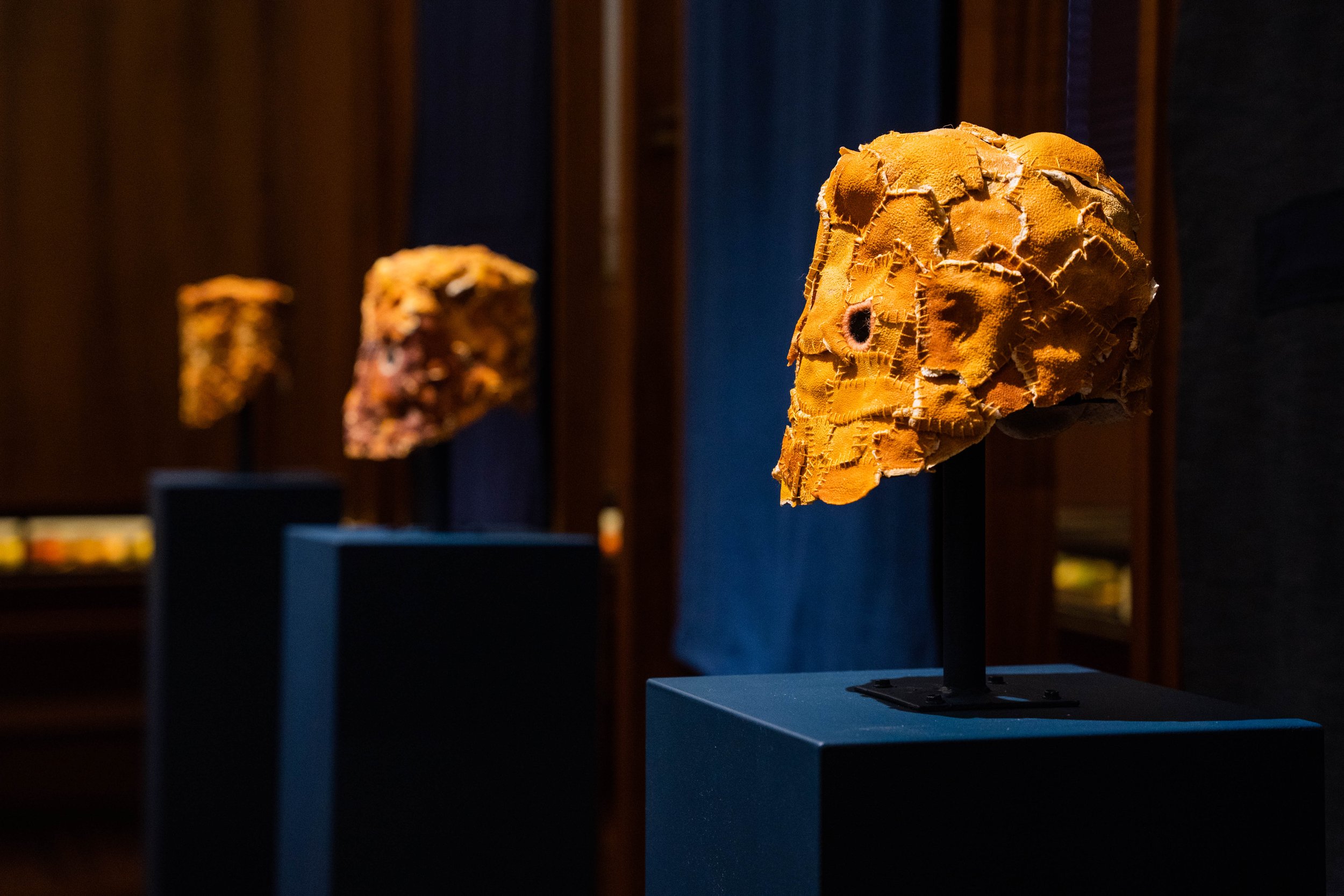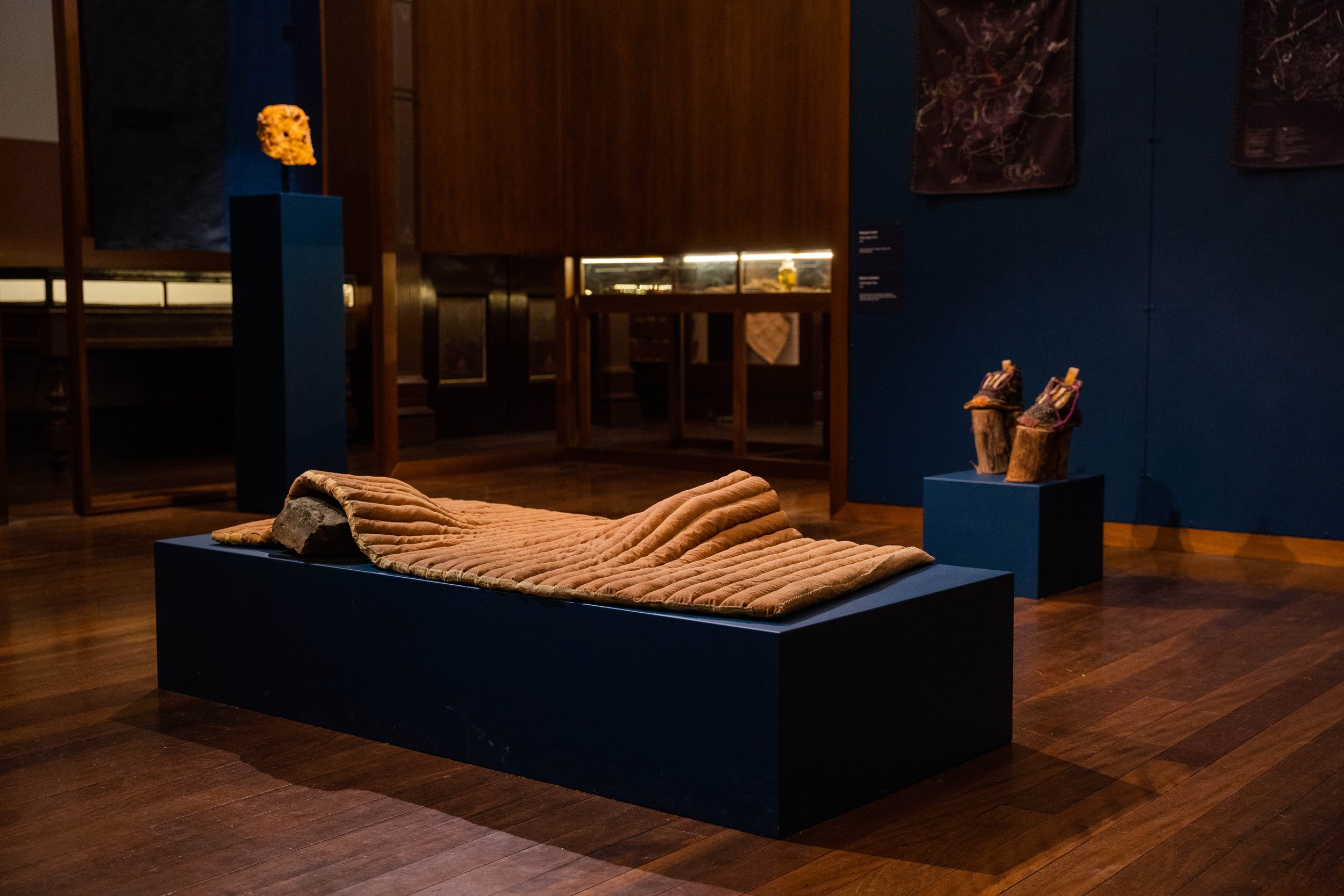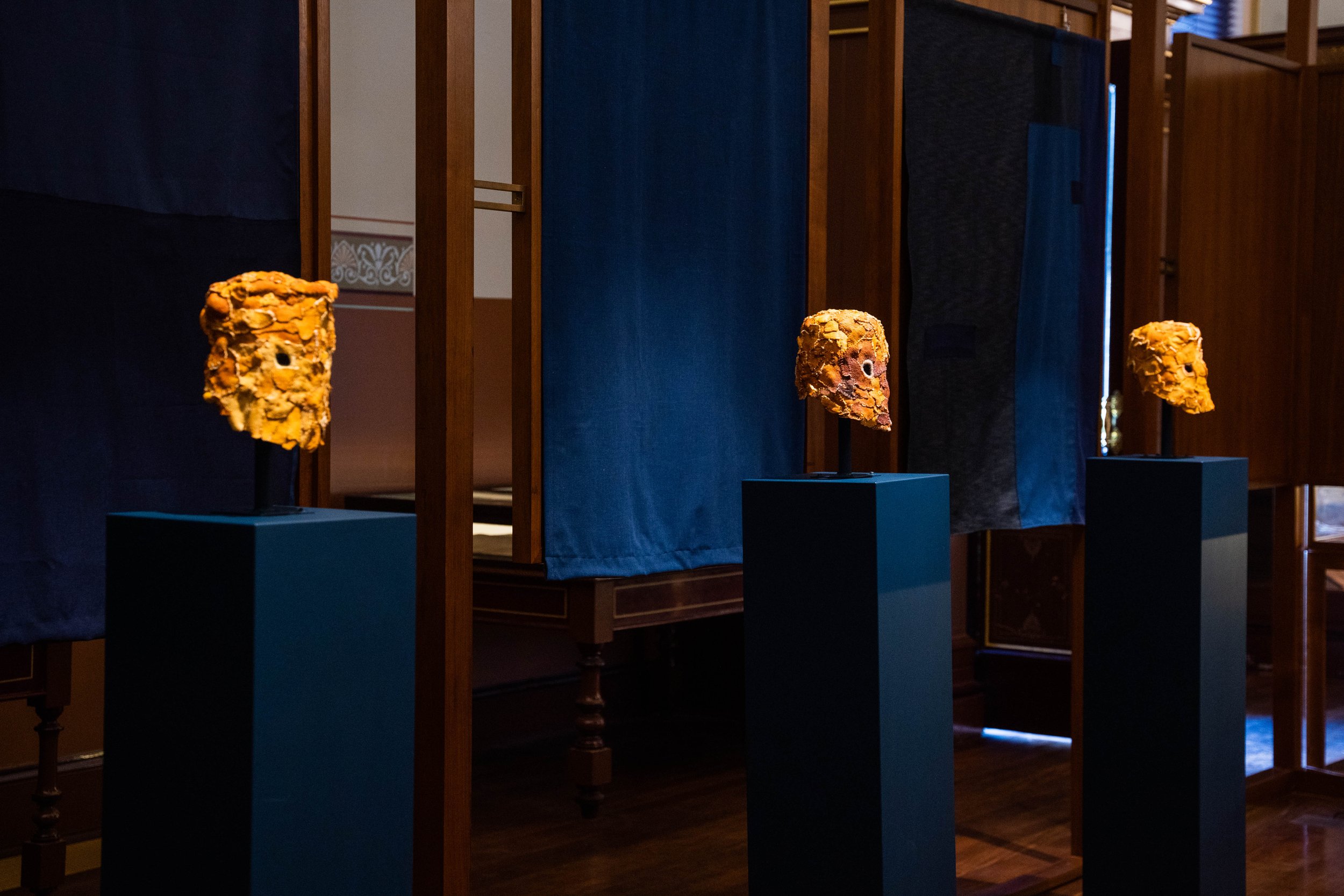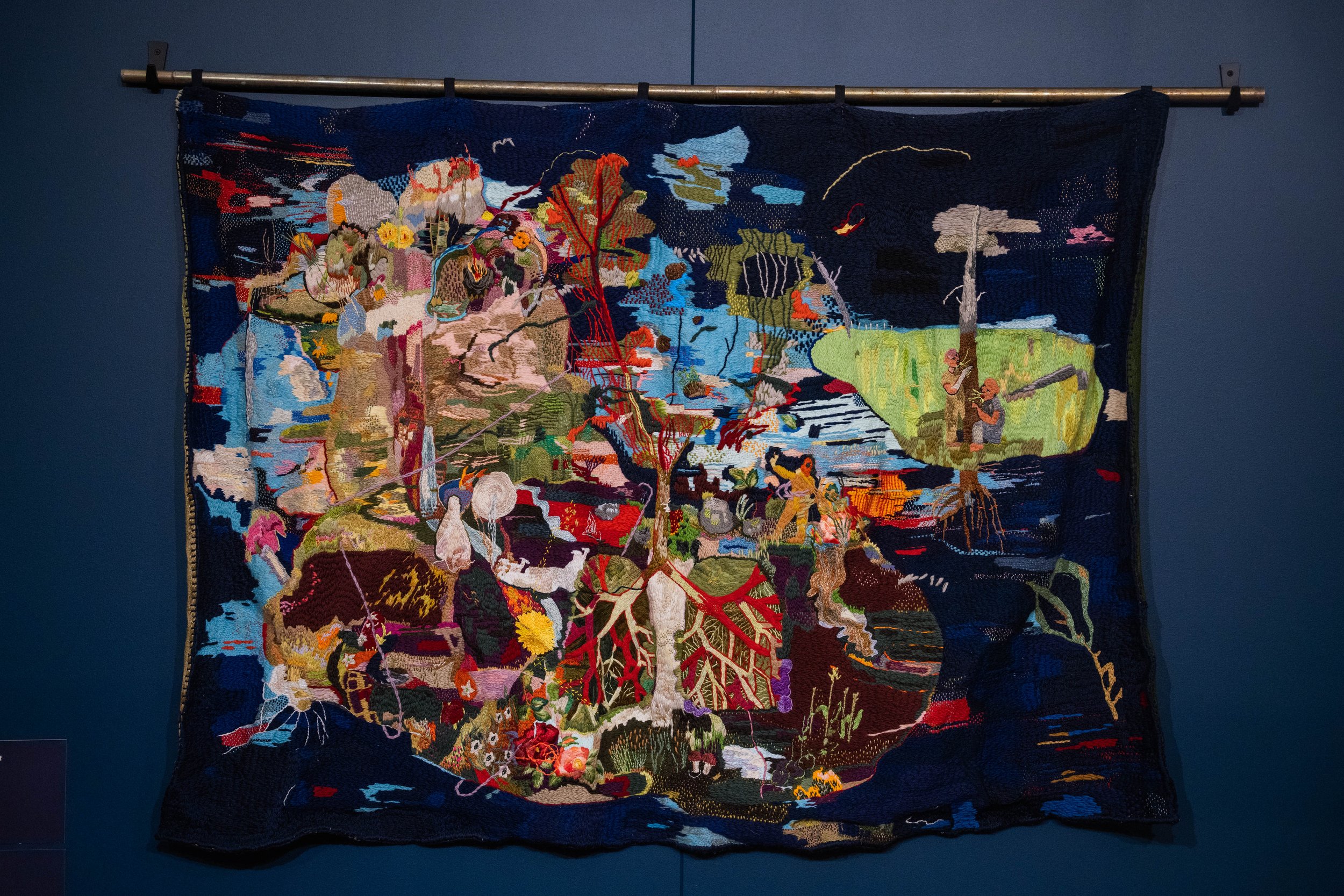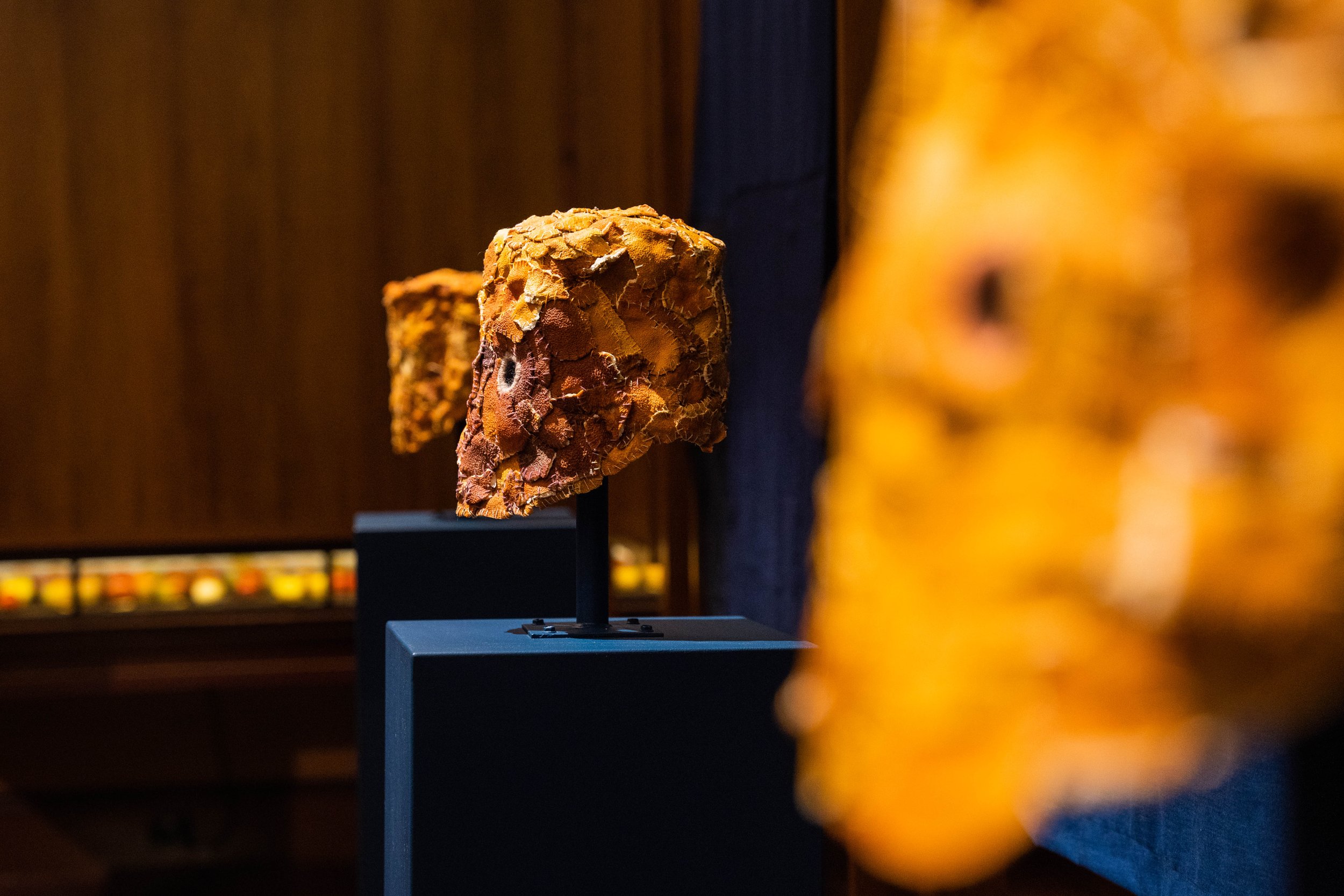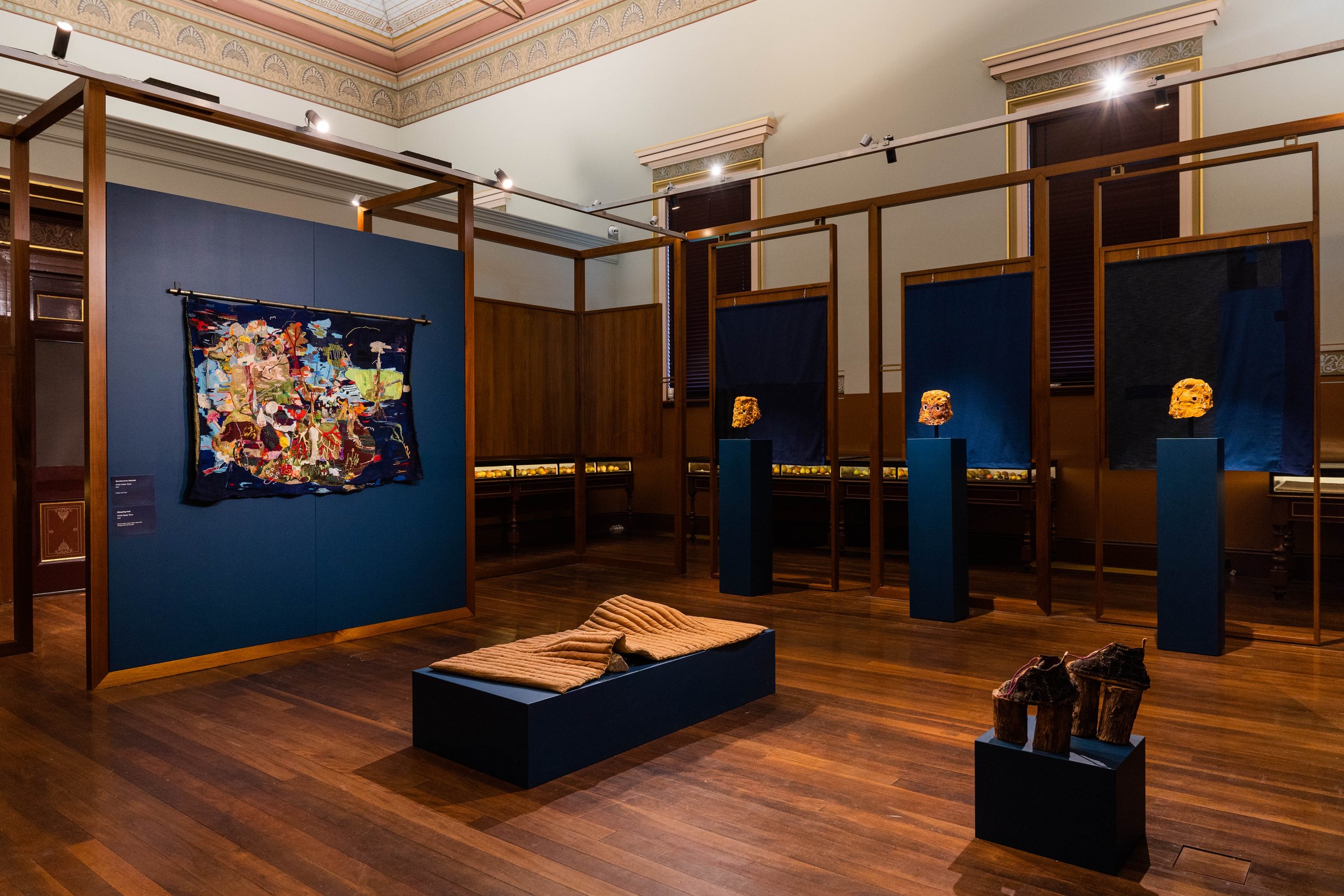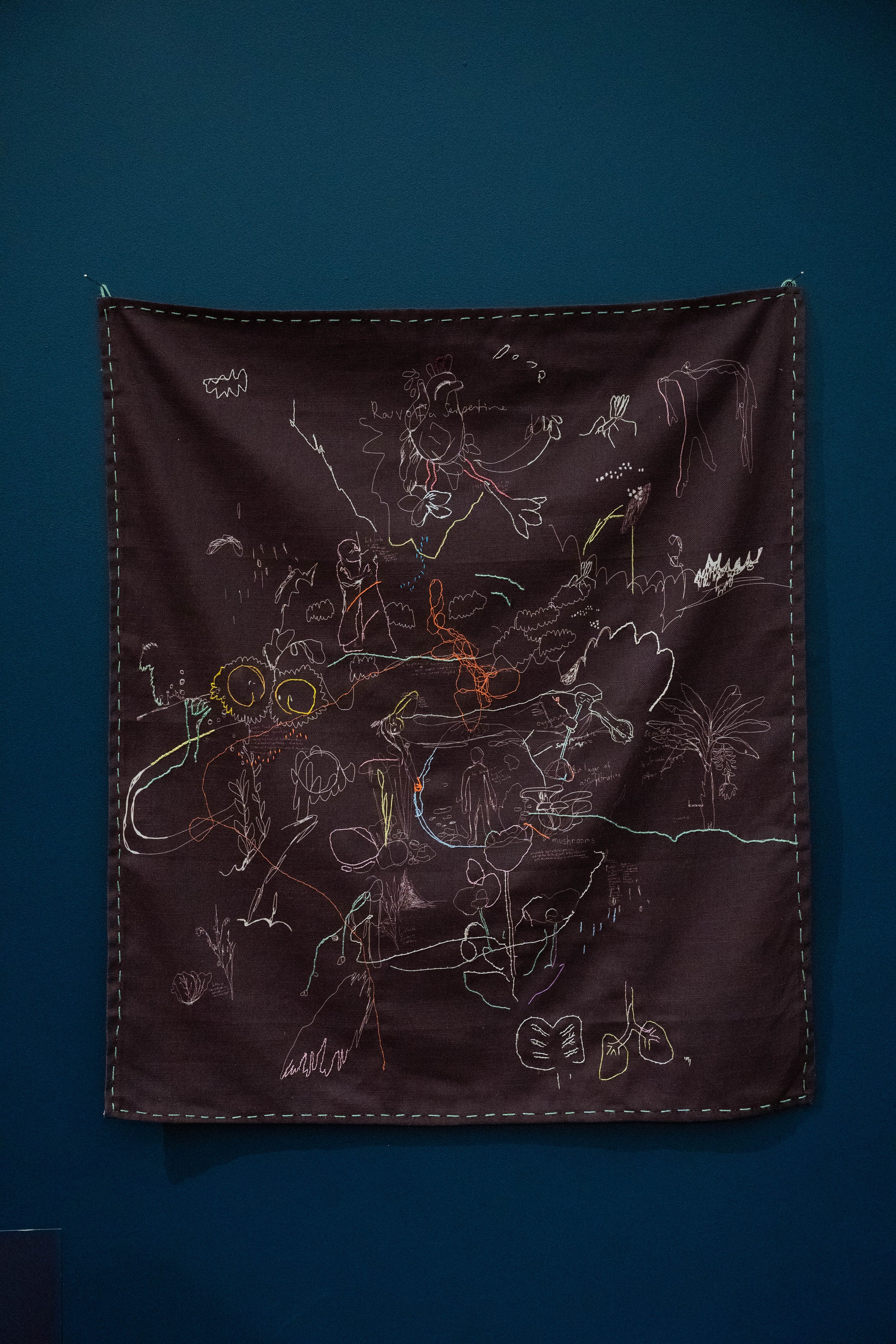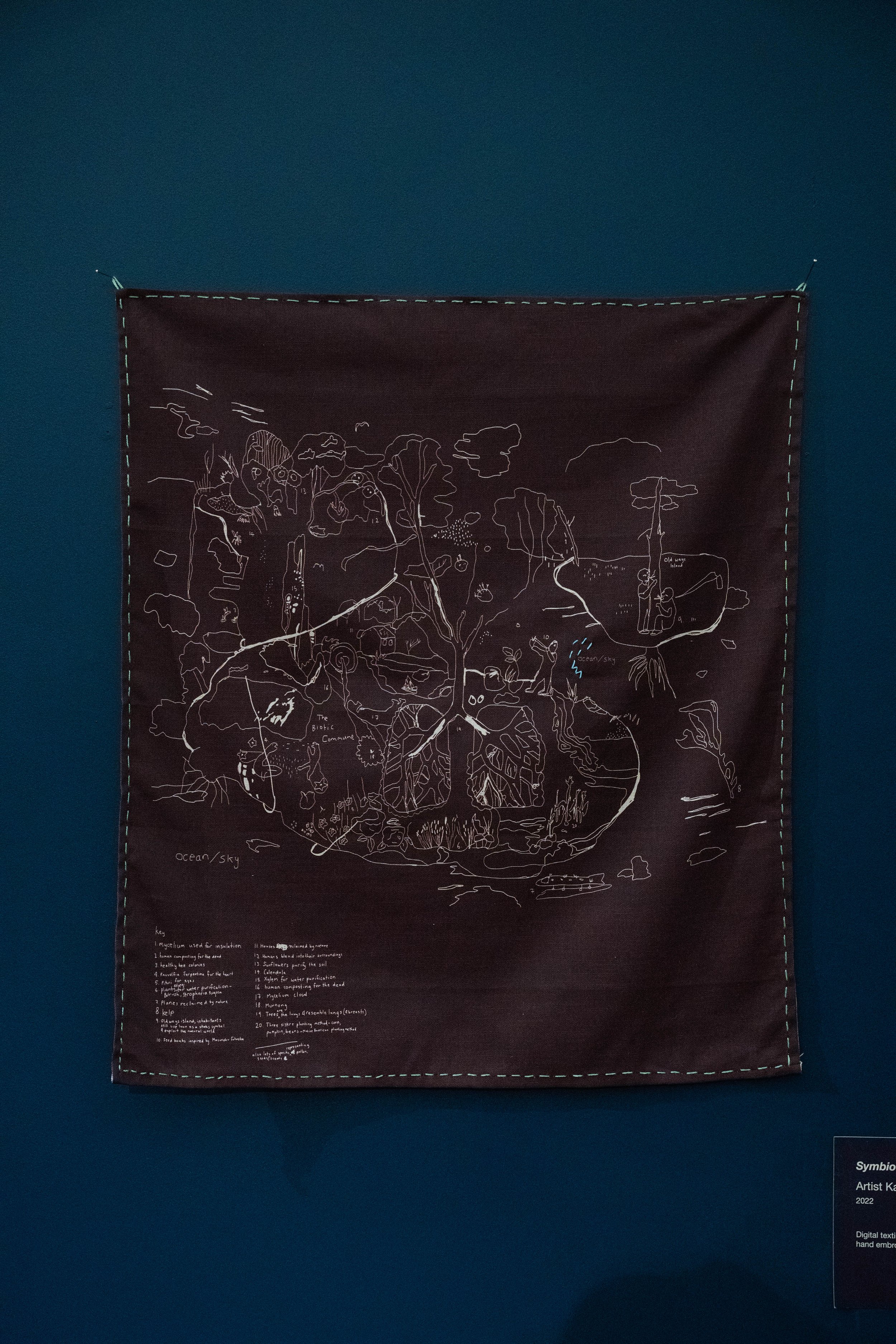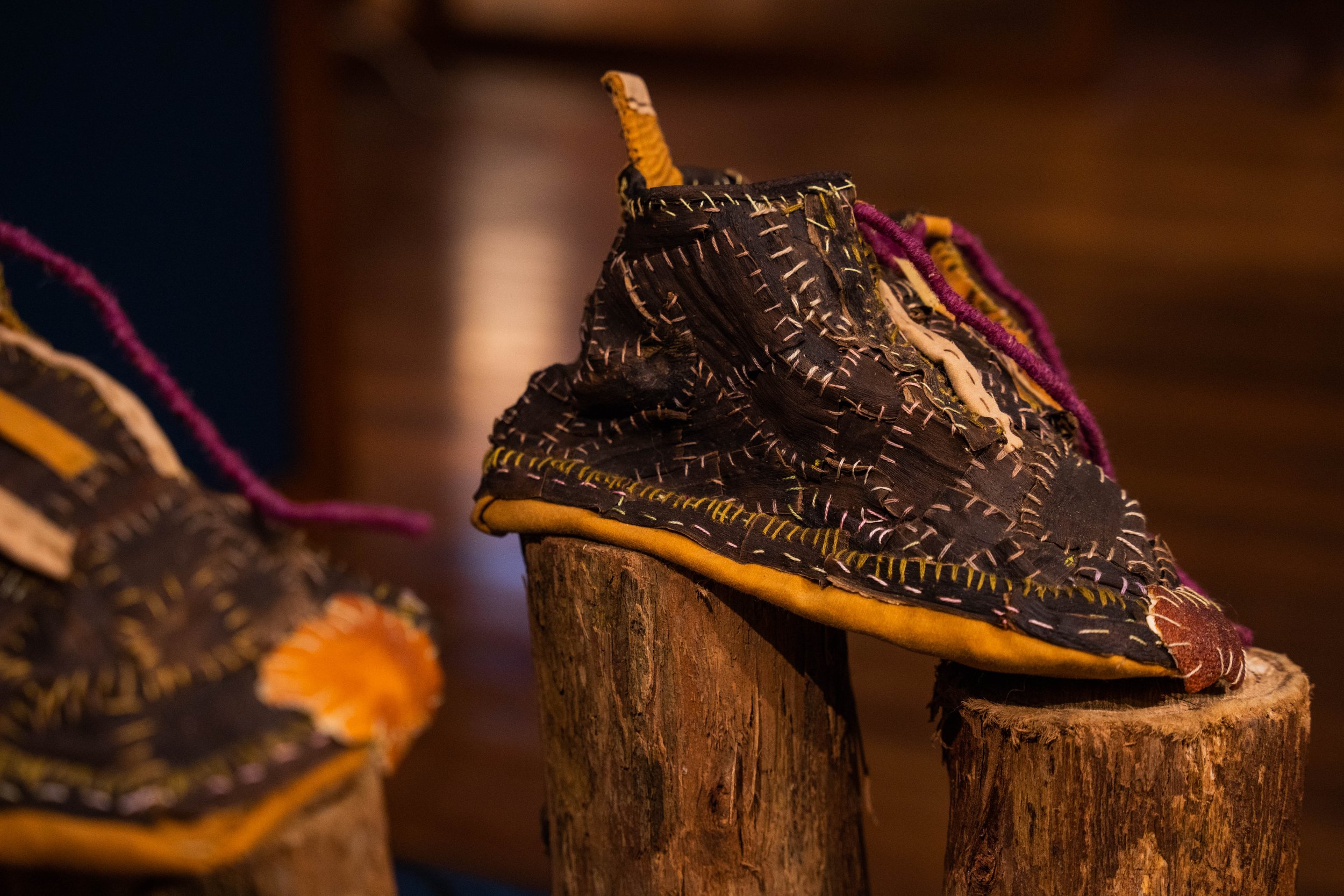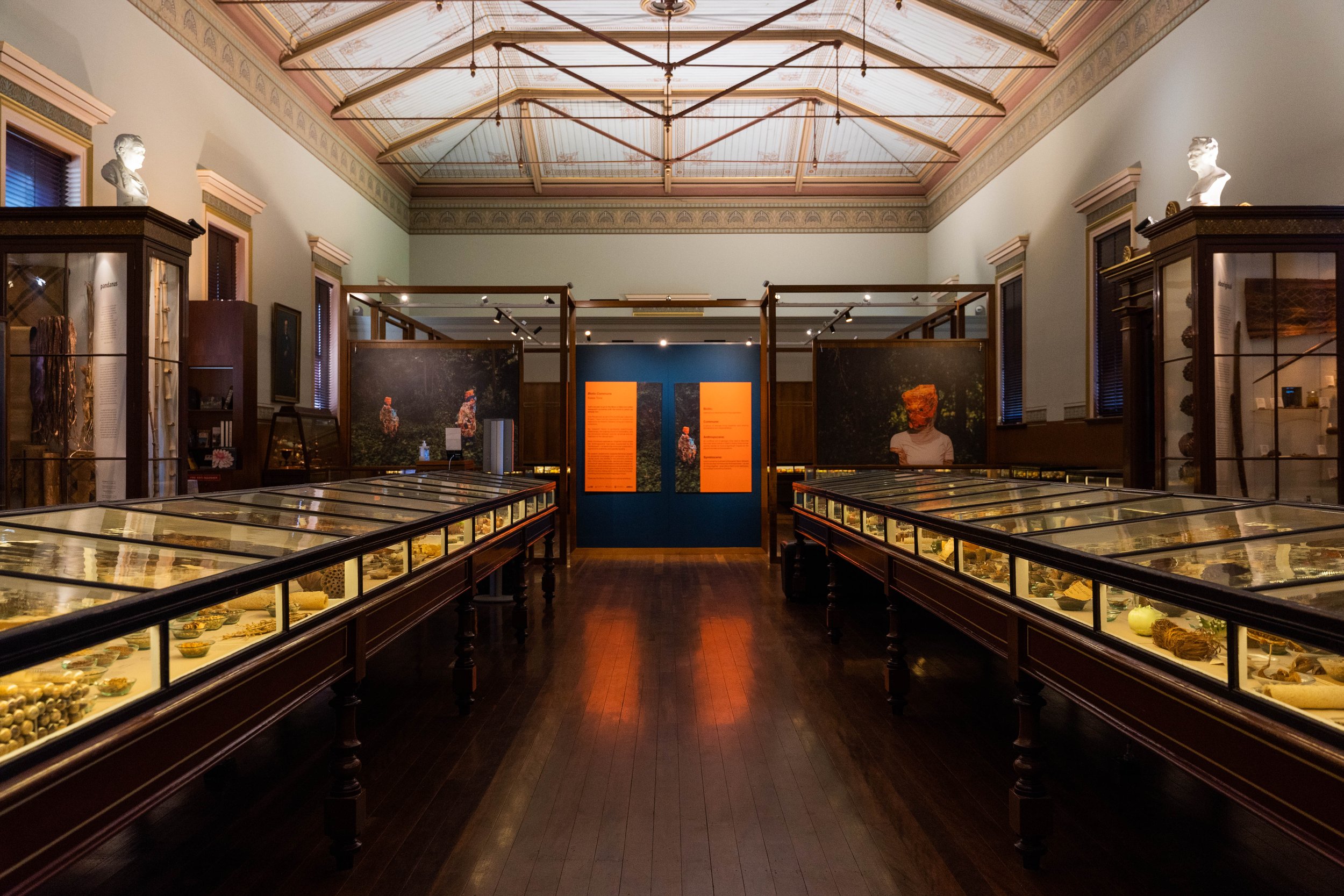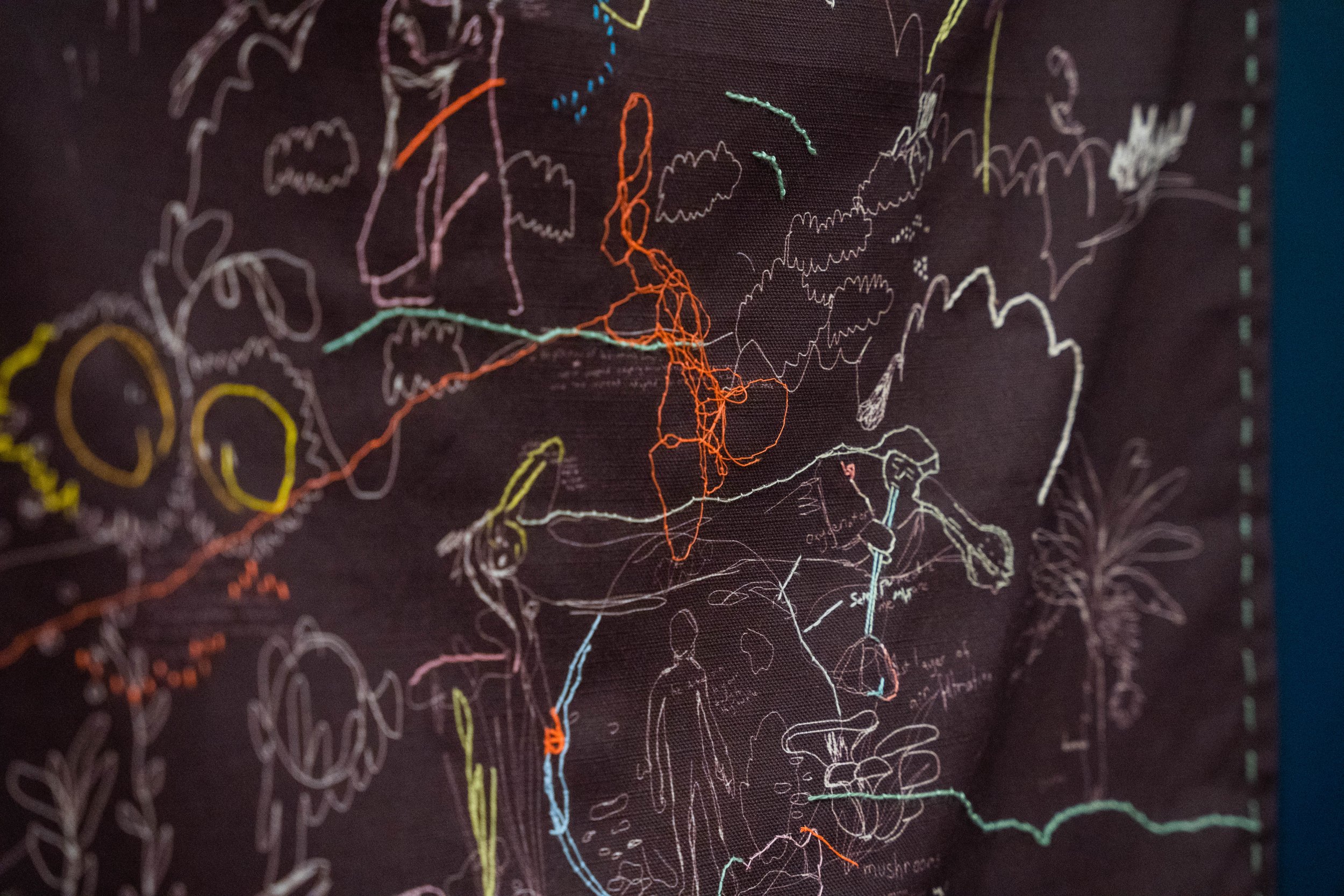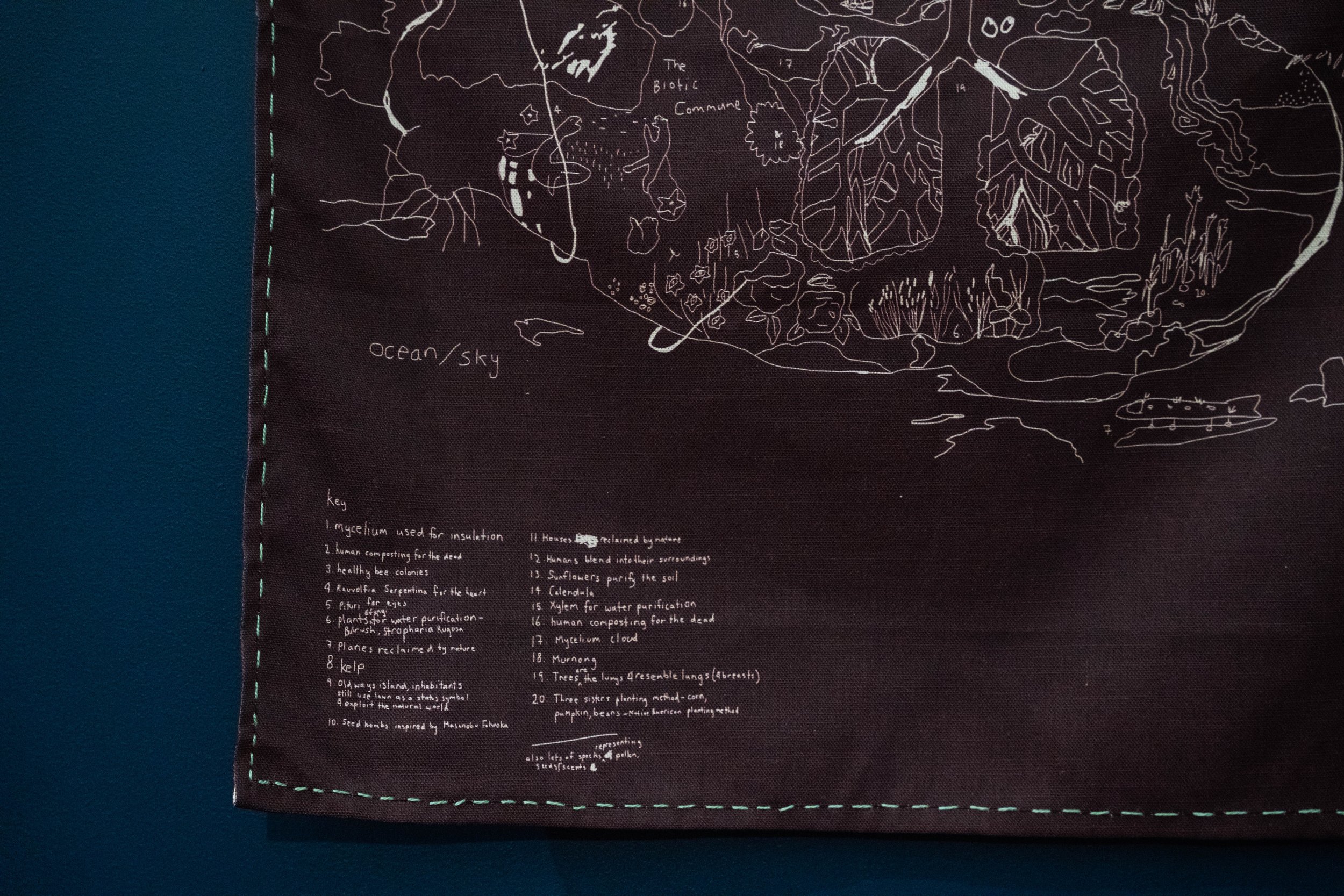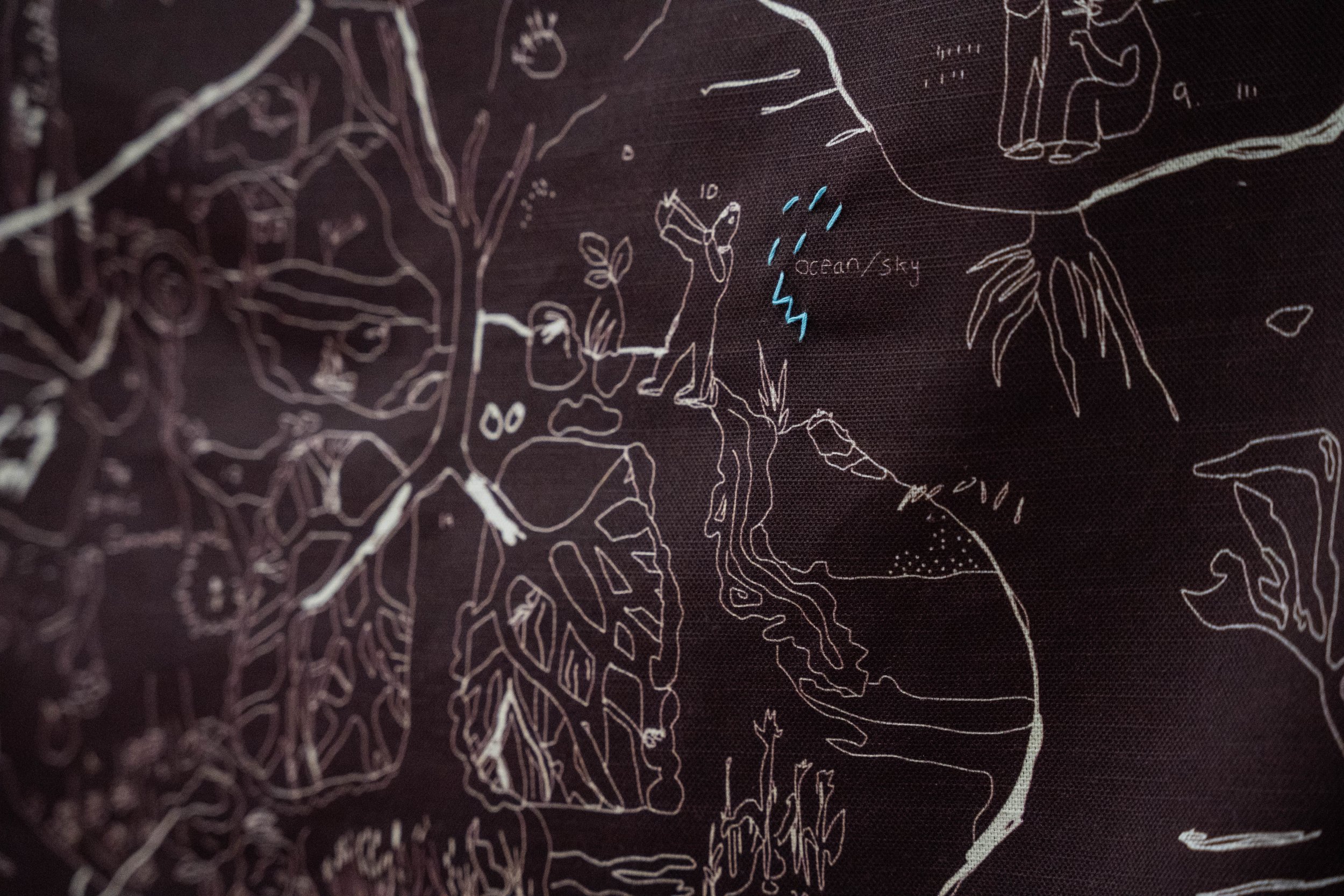Biotic Commune is a collection of cultural artefacts from an imagined, futuristic society where the Symbiocene has replaced the former Anthropocene as its philosophy towards existing. Humans morph into the background as humble caretakers of the natural world and all living organisms are left to live and die by their own rules, slowly recovering, adapting and in some cases, mending the damage of humans from the time when they still held the power. Inspired by research into both the living and cultural collections of the Botanic Gardens, Biotic Commune is as much about the past as it is the future.
One of the pieces, a large, embroidered narrative blanket comprises visual notes from my far-ranging research. It is my way of recording the overwhelming hurricane of written information including, but not limited to, historical records of plant use, discoveries and revelations, First Nations perspectives, failed attempts at alternative agricultural utopias, and artistic impressions of future humans photosynthesising with the help of algae. As with my previous bodies of work, this embroidery was the first piece to be made— place to put ideas, a blueprint for the rest of the works and to reach some sort of clarity about this imagined world. What does it reference, how does it operate, what is its ethos? I was only able to answer the last two questions quite late in the project, coinciding with the decision to move from my industrial studio in the city to work from my little home on Peramangk country. It didn’t make sense to continually travel from a place where I was surrounded by nature to sit in a concrete nook to create a show about existing in the natural world. I need to really immerse myself in the concept, to live the ideas that I am exploring. Reading can be abstract. I need to sit and observe the quiet intelligence of plants and fungi, to try and learn the language of the natural world, to be in contact with the reality of the seasons, to respond to and not buffer myself from changes in weather and the cycles of the day. I have to watch self-seeding calendula push their way confidently through the sticky red clay I live on, sunflowers sprouting out of gaps in an old wooden box, and Warrigal Greens, first gifted from a friend as a baby, growing so fast I can almost see it happening.
The humans that exist within the Biotic Commune don’t fear the natural world, they don’t control, tame or exploit. They have remembered that all the elements of the natural world with which they coexist are part of their community, their family. They still make use of plants for food, shelter, clothing, and medicine but in line with the plant community, it is a regenerative process. They wear balaclavas made from fruit and vegetable skins - a symbol of their commitment to the Symbiocene. When they die, they no longer use the toxic chemical processes of the past but compost into the earth to complete the cycle of eater and eaten. This imagined Biotic Commune world could be seen as utopian, romantic, unrealistic? And maybe it is, if viewed from an anthropocentric lens where the comfort of humans is central. But given the chance to imagine a futuristic world, I’m happy to stick with this one. The stories we tell, the myths we embrace, have proven, throughout history to shape our relationship with the natural world for better or for worse. Biotic Commune for me is a reminder to be humble, to observe and listen gently and never underestimate the intelligence and resilience of the natural world of which we are lucky to be a part.
photos by Lana Adams
